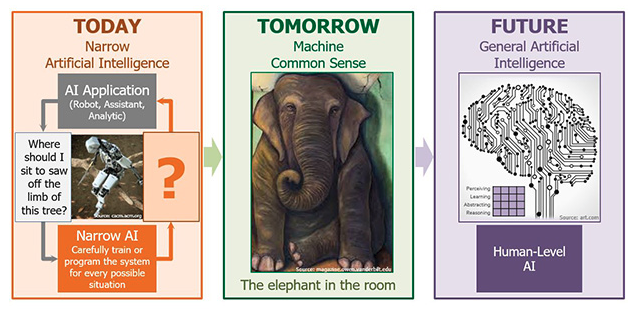
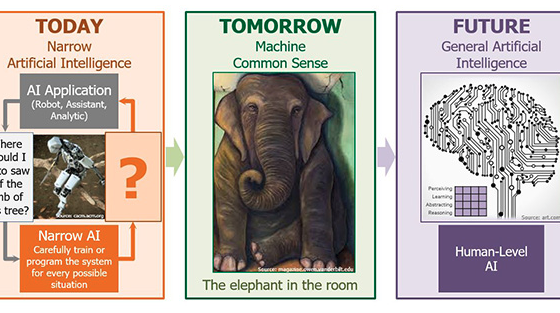
News
US Department of Defense commits $2B to training AI to have “common sense”
While artificial intelligence is being painted by companies and government as the catch-all answer to many of today’s inefficiencies and problems, it currently has one glaring shortcoming: It can’t answer common sense questions.
In an effort to address this current shortcoming of AI, The U.S. Department of Defense (DoD) is committing $2 billion dollars over the next five years to its Machine Common Sense (MCS) Program. The program aims to enable computers to communicate naturally, behave reasonably in new situations, and learn from new experiences.
Thanks in part to Iron Man (and Elon Musk) fame, the Defense Advanced Research Projects Agency, aka “DARPA”, an agency within the DoD, may be one of the few alphabet soup government agencies with a future-tech-savvy reputation. That reputation is well deserved, too, if history has anything to say about it. As the agency that gave us the Internet through an extension of a defense communication project, just having a discussion online about DARPA itself is testament to the tech potential it represents. The challenge of creating true, thinking computers is perfectly aligned with what DARPA has done well with overall.

As the advancement of computer technology increases at a near exponential rate, so too has the potential relationship between them and humans. However, the possibility of a troubling disconnect is also a growing reality. In other words, humans and computers currently operate very differently from one another, and that could spell bad things for the weaker logician of the two. Yeah, that means us.
Elon Musk has famously harped about this predicted disconnect on numerous occasions, and one of the companies he’s invested in, Neuralink, is working on preemptive solutions for its coming problems. While Neuralink generally aims to help human brains work more like computers, DARPA is taking the approach of having computers work more like humans.
The term “common sense” can often be tossed around in conversations to imply a variety of shared knowledge bases, but as a federal government agency, DARPA has its own specific definition for this context: “The basic ability to perceive, understand, and judge things that are shared by nearly all people and can be reasonably expected of nearly all people without need for debate.” By mimicking the cognitive processes we go through when we are young, the agency hopes computers will develop the “fundamental building blocks of intelligence and common sense” just like a human.
With advanced neural networks making amazing (and humorous) headlines regularly, what would a “common sense” machine bring to the table in terms of advancement? One primary answer is the requirement for less initial information. To quote Dr. Brian Pierce, director of DARPA’s Innovation Office, at a recent summit, “We’d like to get away from having an enormous amount of data to train neural networks.” If a machine could use its environment to deduct answers when compared to its existing knowledge base, as humans do, it wouldn’t need to be taught to interpret data solely based on an enormous amount of data previously provided. Essentially, it could think for itself using common sense.
DARPA has now completed a “Proposers Day” wherein potential contractors were presented with the agency’s specifics for its MCS program. The next step is a “Broad Agency Announcement”, i.e., a formal invitation for proposals to work on the project with the hope of obtaining a federal contract to fulfill its aim.
If the contract winner is successful, will common sense lead to computer behavior we’d welcome rather than fear? Hopefully that will be figured out sooner rather than later.

News
Tesla Cybercab tests are going on overdrive with production-ready units
Tesla is ramping its real-world tests of the Cybercab, with multiple sightings of the vehicle being reported across social media this week.
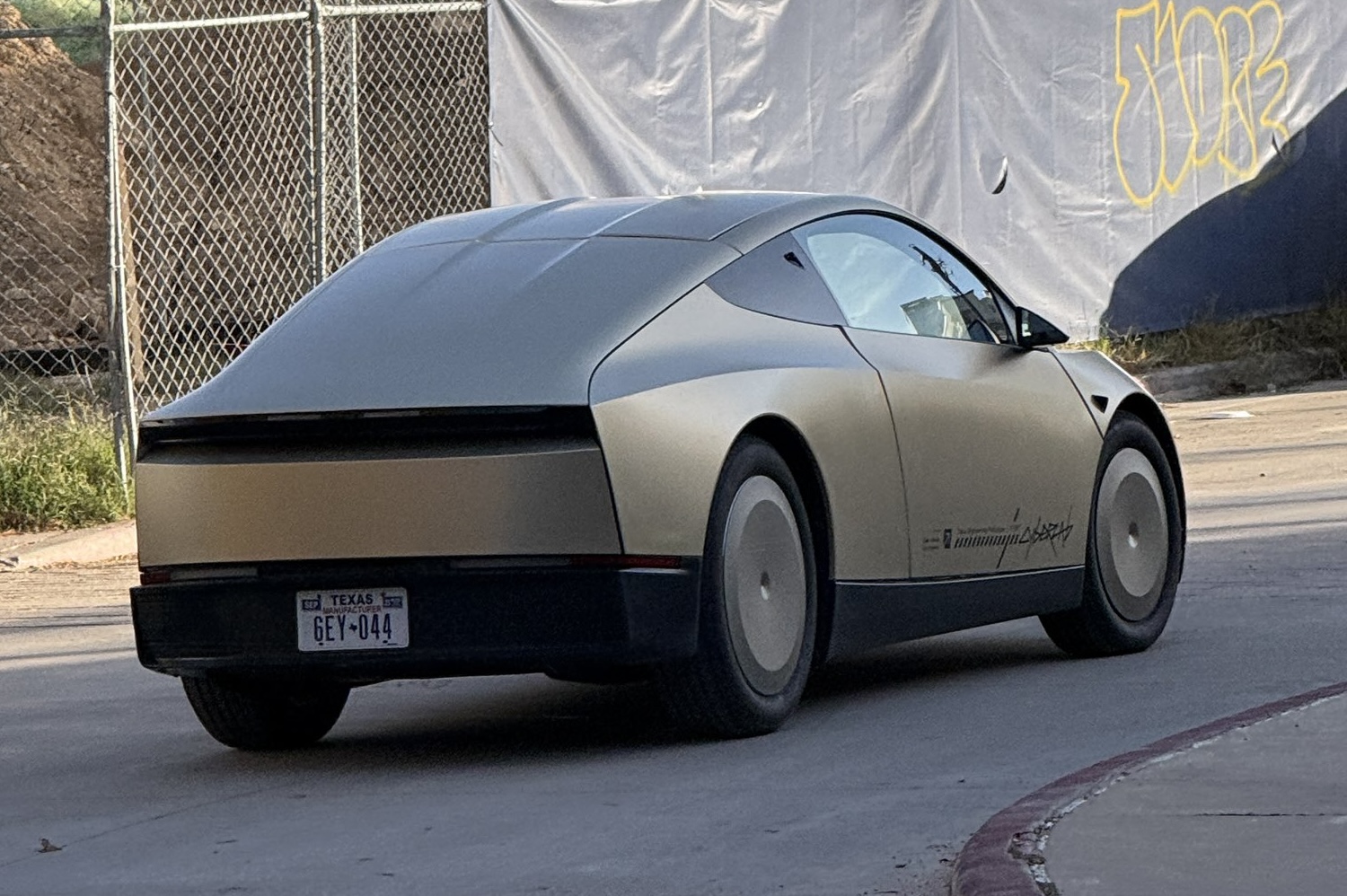
Tesla is ramping its real-world tests of the Cybercab, with multiple sightings of the autonomous two-seater being reported across social media this week. Based on videos of the vehicle that have been shared online, it appears that Cybercab tests are underway across multiple states.
Recent Cybercab sightings
Reports of Cybercab tests have ramped this week, with a vehicle that looked like a production-ready prototype being spotted at Apple’s Visitor Center in California. The vehicle in this sighting was interesting as it was equipped with a steering wheel. The vehicle also featured some changes to the design of its brake lights.
The Cybercab was also filmed testing at the Fremont factory’s test track, which also seemed to involve a vehicle that looked production-ready. This also seemed to be the case for a Cybercab that was spotted in Austin, Texas, which happened to be undergoing real-world tests. Overall, these sightings suggest that Cybercab testing is fully underway, and the vehicle is really moving towards production.
Production design all but finalized?
Recently, a near-production-ready Cybercab was showcased at Tesla’s Santana Row showroom in San Jose. The vehicle was equipped with frameless windows, dual windshield wipers, powered butterfly door struts, an extended front splitter, an updated lightbar, new wheel covers, and a license plate bracket. Interior updates include redesigned dash/door panels, refined seats with center cupholders, updated carpet, and what appeared to be improved legroom.
There seems to be a pretty good chance that the Cybercab’s design has been all but finalized, at least considering Elon Musk’s comments at the 2025 Annual Shareholder Meeting. During the event, Musk confirmed that the vehicle will enter production around April 2026, and its production targets will be quite ambitious.
News
Tesla gets a win in Sweden as union withdraws potentially “illegal” blockade
As per recent reports, the Vision union’s planned anti-Tesla action might have been illegal.
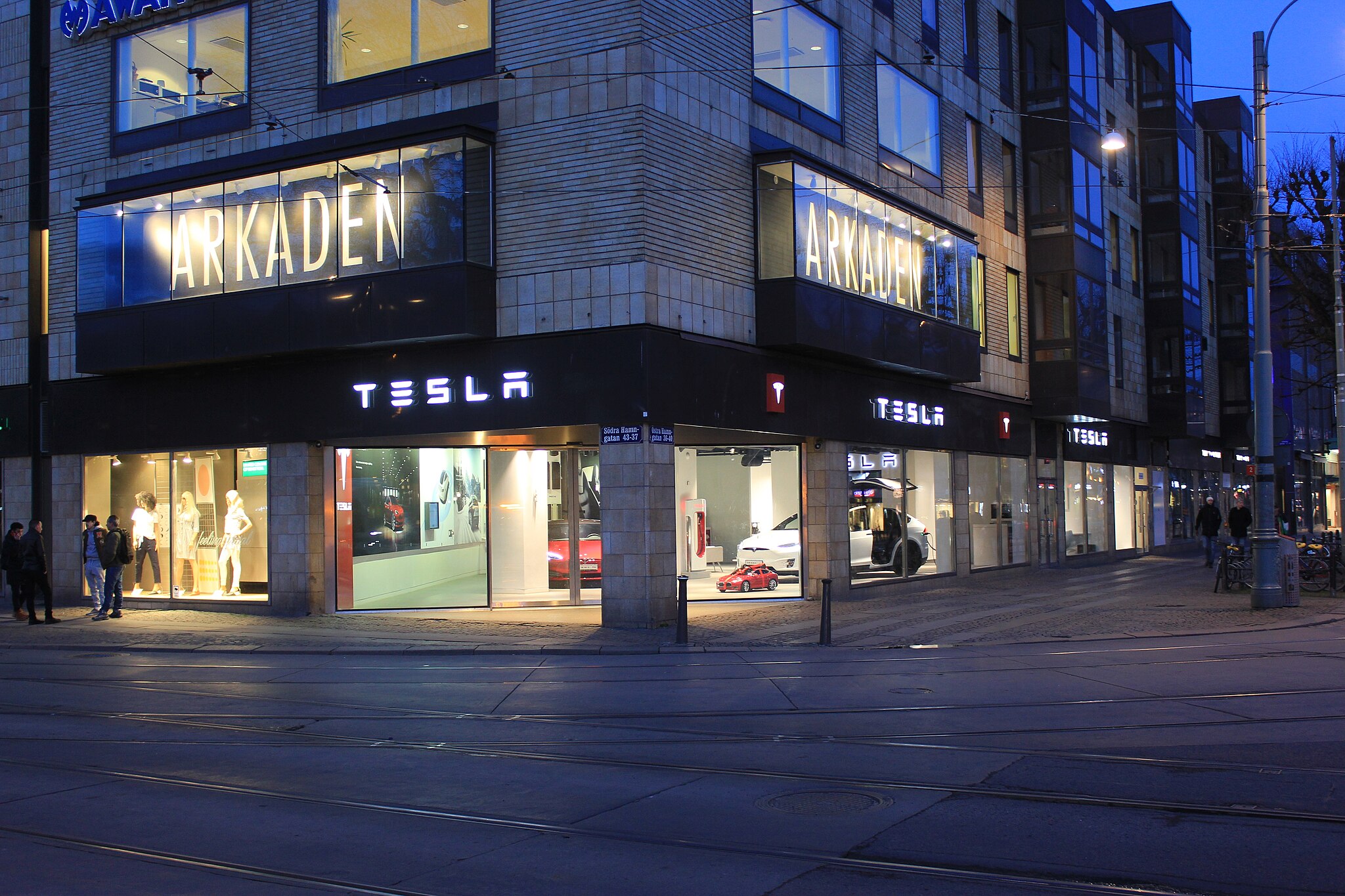
Swedish union Vision has withdrawn its sympathy blockade against Tesla’s planned service center and showroom in Kalmar. As per recent reports, the Vision union’s planned anti-Tesla action might have been illegal.
Vision’s decision to pull the blockade
Vision announced the blockade in early December, stating that it was targeting the administrative handling of Tesla’s facility permits in Kalmar municipality. The sympathy measure was expected to start Monday, but was formally withdrawn via documents sent to the Mediation Institute and Kalmar Municipality last week.
As noted in a Daggers Arbete report, plans for the strike were ultimately pulled after employer group SKR highlighted potential illegality under the Public Employment Act. Vision stressed its continued backing for the Swedish labor model, though Deputy negotiation manager Oskar Pettersson explained that the Vision union and IF Metall made the decision to cancel the planned strike together.
“We will not continue to challenge the regulations,” Petterson said. “The objection was of a technical nature. We made the assessment together with IF Metall that we were not in a position to challenge the legal assessment of whether we could take this particular action against Tesla. Therefore, we chose to revoke the notice itself.”
The SKR’s warning
Petterson also stated that SKR’s technical objection to the Vision union’s planned anti-Tesla strike framed the protest as an unauthorized act. “It was a legal assessment of the situation. Both for us and for IF Metall, it is important to be clear that we stand for the Swedish model. But we should not continue to challenge the regulations and risk getting judgments that lead nowhere in the application of the regulations,” he said.
Vision ultimately canceled its planned blockade against Tesla on December 9. With Vision’s withdrawal, few obstacles remain for Tesla’s long-planned Kalmar site. A foreign electrical firm completed work this fall, and Tesla’s Careers page currently lists a full-time service manager position based there, signaling an imminent opening.
News
Tesla Semi program Director teases major improvements
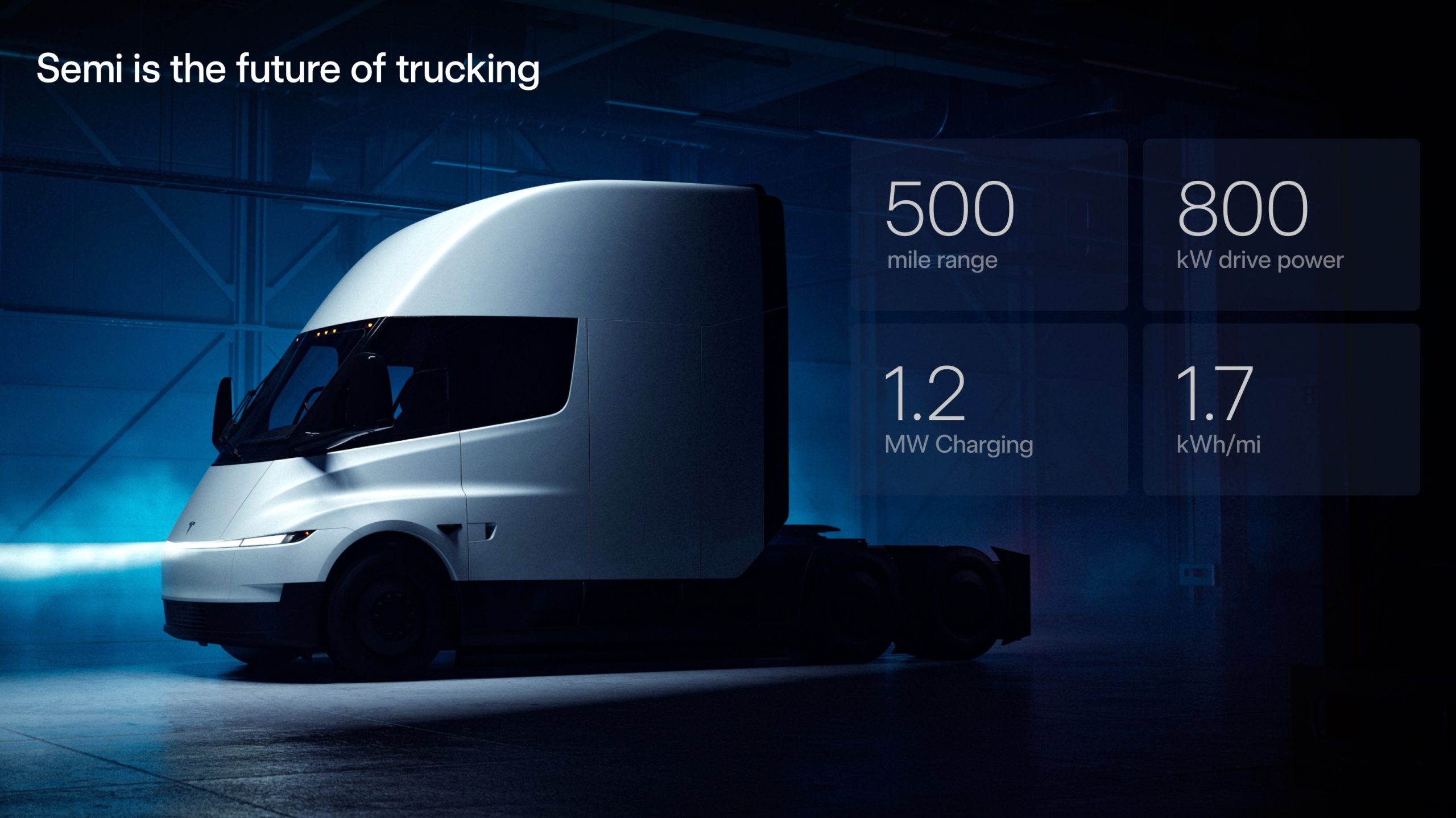
Tesla Semi Program Director Dan Priestly teased the major improvements to the all-electric Class 8 truck on Thursday night, following the company’s decision to overhaul the design earlier this year.
Priestley said he drove the Semi on Thursday, and the improvements appear to be welcomed by one of the minds behind the project. “Our customers are going to love it,” he concluded.
Just drove the redesigned Semi. Our customers are going to love it. https://t.co/KZ88sf1CDL
— Dan Priestley (@danWpriestley) December 19, 2025
The small detail does not seem like much, but it is coming from someone who has been involved in the development of the truck from A to Z. Priestley has been involved in the Semi program since November 2015 and has slowly worked his way through the ranks, and currently stands as the Director of the program.
Tesla Semi undergoes major redesign as dedicated factory preps for deliveries
Tesla made some major changes to the Semi design as it announced at the 2025 Annual Shareholder Meeting that it changed the look and design to welcome improvements in efficiency.
Initially, Tesla adopted the blade-like light bar for the Semi, similar to the one that is present on the Model Y Premium and the Cybertruck.
Additionally, there are some slight aesthetic changes to help with efficiency, including a redesigned bumper with improved aero channels, a smaller wraparound windshield, and a smoother roofline for better aero performance.
All of these changes came as the company’s Semi Factory, which is located on Gigafactory Nevada’s property, was finishing up construction in preparation for initial production phases, as Tesla is planning to ramp up manufacturing next year. CEO Elon Musk has said the Semi has attracted “ridiculous demand.”
The Semi has already gathered many large companies that have signed up to buy units, including Frito-Lay and PepsiCo., which have been helping Tesla test the vehicle in a pilot program to test range, efficiency, and other important metrics that will be a major selling point.
Tesla will be the Semi’s first user, though, and the truck will help solve some of the company’s logistics needs in the coming years.








